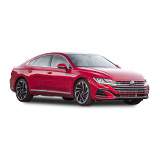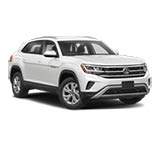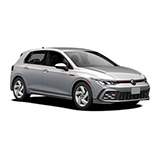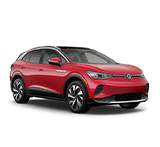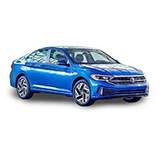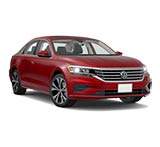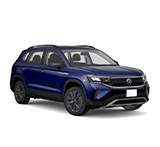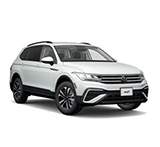Volkswagen
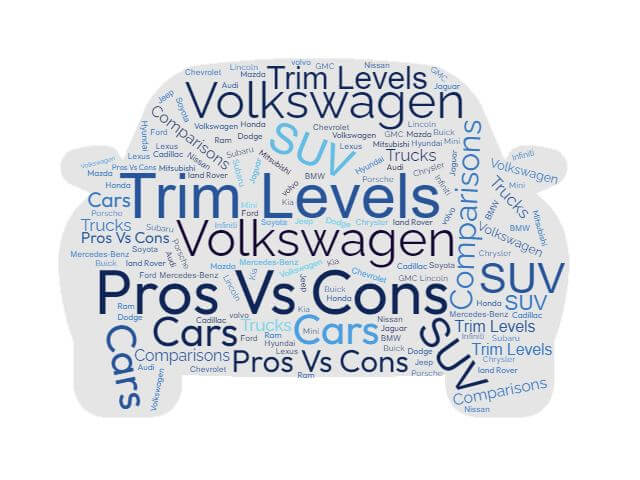
About Volkswagen
The history of the Volkswagen dates back to the early 1930s in Germany. Over the course of nearly 90 years, Volkswagen has ended up the largest automobile manufacturer in Germany and the second largest on the planet.
1930 to 1933 - The Birth of People's Car Projects
During the early part of the 1930s, a majority of Germans relied upon motorcycles for motorized transport. Only the wealthiest of Germans owned automobiles. The German automobile industry -- that ultimately would be the home of Volkswagen -- almost exclusively designed and built luxury motorcars.
An auto designer called Ferdinand Porsche lobbied German auto manufacturers to consider building a lower cost auto of his creation -- a motorcar that would be suitable for use by the masses of German people. In 1931, he built on his own a prototype of this auto for the masses, a car for the people, which he christened the Volksauto. Volkasuto roughly translates into English as people's auto.
The Volksauto truly can be considered the first generation Volkswagen inasmuch as Porsche's vehicle featured a design that looked very similar to the Volkswagen "Beetle" that ultimately would become iconic. Despite his efforts, it wasn't until the German Chancellor became involved in making motorcars available to the masses that Porsche's concept really came to life. In the end, the German Chancellor would become known for far more than bringing an auto design to German masses -- and ultimately the world.
1933 - 1939 - The Rise of the German Third Reich
In 1933, Adolph Hitler personally started to involve himself in the development of a motorcar for all of the German people. Indeed, Hitler had his sights set on brining a car to market that would showcase German technology and be marketed the world over. In order to accomplish his objectives, Hitler turned to Porsche and his Volksauto.
Ultimately, the People's Car -- rechristened Volkswagen -- would enter production. The auto design was that of the VW Beetle that would remain on the market for decades to come -- ultimately not only in Germany, but around the world and including the United States. Although the vehicle had the Beetle design, that moniker was not attached to it during this era.
Porsche and his sponsor, the leader of the Third Reich, were concerned not only with developing a motorcar that was affordable to purchase, but to operate as well. Thus, a great deal of effort was made to render the Volkswagen as aerodynamic as possible as a means of conserving fuel when in operation.
As an aside, the Volkswagen Cabriolet would become a popular vehicle in the United States and elsewhere in the later part of the 20th century. During this time period, the first Volkswagen model called a Cabriolet was delivered to Adolph Hitler for his personal use.
1939 - 1945 - Militarizing Volkswagen
By 1939, Germany -- and, in time, the world, was at war. The Third Reich retooled civilian automobile manufacturers to focus on the military needs of the nation. Such was the case with Volkswagen.
Consumer development and production of the basic Volkswagen model (what would become the Beetle in time) halted. The design was altered to meet the needs of the German military. This included an amphibious version of the Volkswagen.
1945 - 1948 - Post War Production and Distribution Abroad
By the end of World War II, the Volkswagen plants ended up in the British Zone, that part of Germany under the supervision of the United Kingdom. The initial plan was to dismantle the plants and send them to England. However, in the end, a British officer named Major Ivan Hirst made the decision to bring the Volkswagen plants back into production for consumers. His real objective at the time was to entice a British, U.S., French or Australian automaker to by the auto works in Germany and take over the brand. In the end, no other auto manufacturer was interested in such a deal.
By this time, the primary Volkswagen model was becoming more widely known as the Beetle. Because of Hirst's efforts in reopening the plants for consumer auto manufacturing, the Volkswagen brand, and specifically the Beetle model, were introduced to the world. British officers were permitted to take their Beetles used while on the Continent home with them to Britain. In the end, the unique design and affordability of the vehicle garnered attention across the United Kingdom and eventually throughout Western Europe, North America and other locations around the globe.
1948 - 1961 - Volkswagen Becomes an Icon
After crossing the Continent into the United Kingdom, the Volkswagen brand -- specifically the Beetle -- hit the market across Britain, Western Europe, Canada and the United States. Although the company did produce a number of different models during this time period, it was the Beetle that became surprisingly popular.
In the post World War II era, people in the United States made a major exodus to the suburbs, making the need for at least one automobile an imperative. As a growing number of women entered into the workplace in the United States (and in other countries around the world), two cars per household became even more commonplace. The Beetle became the perfect choice for a second, affordable vehicle in a two car household.
1961 - 1973 - Volkswagen Brand Expansion
Beginning in the 1960s, Volkswagen began to expand the models it manufactured and introduced to the market. Although the Beetle remained the company's mainstay, the company introduced or expanded the availability of a number of models including the Volkswagen "bus" that became somewhat synonymous with the laid back culture of the 1960s.
During this time period, the Cabriolet (originally presented as a gift for Adolph Hitler) hit the scene again. The Notchback (a vehicle designed a bit larger than the Beetle) and the Squareback (the Volkswagen version of a station wagon) also entered onto the marketplace in the United States and different countries around the world.
1974 - 1999 - Volkswagen Goes Mainstream and Upmarket
From the mid-1970s through the end of the century, Volkswagen somewhat reversed course from its position at the time of its genesis in German in the 1930s. No only did the company continue to expand the brand by introducing new models, the company went upmarket. Although the company maintained a commitment to manufacturing affordably priced vehicles, it also produced more expensive vehicles as well. During this time period, the Beetle went off the market for the first time since its entry onto the marketplace. New (or revamped and reintroduced) models included the Polo, the Passat and the Golf.
Ultimately, by the late 1990s, a sleeker version of the Beetle returned to the market -- with great fanfare and a positive reception from the public in the United States and elsewhere around the world.
The 21st Century - Model Expansion for a New Era
The 21st century really does represent a new era for Volkswagen. It's product line includes some of the best selling models in the United States and around the world. These include the Jetta, the Sirocco and the Tiguan -- an SUV. In addition, the company now markets what is billed as the most fuel efficient car on the planet, the Volkswagen XL1 which is said to get 261 miles per gallon.

